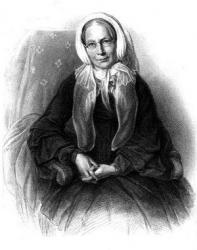
1725 - 1797 Hymnal Number: d323 Author of "Welcome, welcome, dear Redeemer" in Revival Hymns ... with a Supplement. 2nd ed. Mason, William, M.A., was born at Kingston-upon-Hull, 1725, and educated at St. John's College, Cambridge. He was some time a Fellow of Pembroke Hall. On taking Holy Orders he became Rector of Aston, and Precentor of York Minster. He died April 5, 1797. His poetical writings, including Poems, Tragedies, Odes, and Hymns, published at intervals, were collected and issued in 4 vols. in 1811 as The Works of William Mason, M.A., Precentor of York, and Rector of Aston. His hymns, few in number, include, "Again the day returns of holy rest”; "Soon shall the evening star with silver [silent] ray", &c. These are in vol. i. of his Works.
-- John Julian, Dictionary of Hymnology (1907)
=======================
Born: February 12, 1725, Kingston-upon-Hull, England.
Died: April 7, 1797, Aston, England. There is a plaque to his memory in Poet’s Corner, Westminster Abbey (next to Milton), with a bas relief image of him.
Pseudonym: Malcolm MacGregor.
Mason was educated at St. John’s College, Cambridge, and became fellow of Pembroke College in 1749. After taking Holy Orders, he became Rector of Aston (near Rotherham), Yorkshire, in 1754. He was appointed Prebend of Holme in York Minster in 1756, Canon Residentiary in 1762, became Precentor and Prebendary of Driffield in 1763. He also served as literary executor for poet Thomas Gray. His works include:
Musaeus, 1744 (a lament for Alexander Pope, in the style of Lycidas)
Isis, 1748
Elfrida, 1752
Odes, 1756
Caractacus, 1759
The English Garden, 1772, 1777, 1779 and 1782
An Heroic Epistle to Sir William Chambers, 1774
Ode to Mr. Pinchbeck, 1776
Epistle to Dr. Shebbeare, 1777
Essay, Historical and Critical, of Church Music, 1795
Sappho, 1797
Sources:
Julian, p. 717
Robinson, p. 35
http://www.hymntime.com/tch/bio/m/a/s/mason_w2.htm
========================
http://en.wikipedia.org/wiki/William_Mason_%28poet%29
William Mason


 My Starred Hymns
My Starred Hymns





